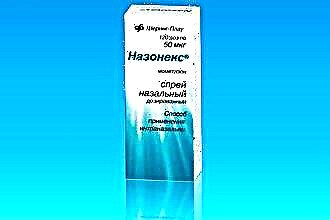 Is it possible to use mustard plasters for tracheitis, and how to do it? To achieve the desired result, it is necessary to adhere to the recommendations for the procedure, observe safety measures and take into account the presence of contraindications.
Is it possible to use mustard plasters for tracheitis, and how to do it? To achieve the desired result, it is necessary to adhere to the recommendations for the procedure, observe safety measures and take into account the presence of contraindications.
The mechanism of action is based on the activation of blood circulation at the site of attachment. By placing a mustard plaster on the surface of the skin, closely passing blood vessels expand, the delivery of anti-inflammatory components of the immune system improves and tissue swelling decreases.
With tracheitis, the action of mustard plasters is to reduce the frequency of cough shocks with a distracting method. They contain essential oil, as well as phytoncides, thanks to which, through many reactions, local protection is increased.
What is needed for the procedure
Before starting the procedure, it is necessary to prepare mustard plasters, a plate, cellophane, and warm water. Together with the preparation, the procedure takes no more than 20 minutes. So, step by step instructions:
- first, you should remove the mustard layers from the packaging, place in a straightened form in a plate with warm water. The mustard plaster should be horizontal and completely submerged in water. In this state, you need to keep it for about 15 seconds. The water temperature should be 37-39 degrees;
- then you need to get them out of the plate, shake them a little so that excess water can drain;
- having chosen a place for warming up, it is necessary to place a mustard layer on it and leave it for 5 minutes. To enhance efficiency, cover the surface with a warm towel and wrap yourself in a blanket or blanket;
- after 5 minutes, the mustard plasters should be removed, after which the patient continues to be under the blanket to "hold" the therapeutic effect.
The procedure is characterized by the appearance of a slight burning sensation. You can also place a sheet of paper or gauze between the mustard layer and the skin to reduce discomfort.
If you feel an intolerable burning sensation under the mustard plaster, you need to stop the procedure.
If the skin is prone to irritation, after the end, the area of the skin can be rinsed with warm water, and also lubricated with vaseline or any other vegetable oil.
It is forbidden to wipe burnt skin after the procedure with alcohol-containing products (cologne).
Where and how often to put mustard plasters
The duration of such treatment should not exceed 5 days. If at the end of the course there was no improvement in the condition, it is not advisable to continue warming up. In addition, it is not recommended to repeat the manipulation more than two times per day. It gives the greatest effect in the evening.
If the mustard layer is kept for more than 5 minutes, you can get a skin burn. Starting from the second time, the duration of warming up can be increased by 1 minute, but the total duration should not exceed 8 minutes.
When a cough appears, mustard plasters are recommended to be placed in the subscapularis, between the shoulder blades, on the upper front, as well as the lateral surfaces of the chest.
Sometimes mustard layers can overlap the feet and calf muscles.
What do you need to remember?
- the procedure is not carried out in areas with increased sensitivity and in the presence of damage;
- with an allergic reaction, after 10-15 minutes, rashes, itching and burning sensations may appear;
- with hyperthermia above 37.5 degrees, it is better to refuse manipulation.
Do not apply mustard plasters to the area of the heart and spinal column.
Contraindications
There are a number of contraindications that limit the use of mustard plasters. These include:
- cough in acute infection, accompanied by hyperthermia, severe intoxication and malaise;
- pregnancy, as well as the lactation period;
- neurodermatitis;
- oncological diseases of benign and malignant origin;
- pathology of the skin (psoriatic lesions, eczema, pustular rashes, ulcerative defects);
- bronchial asthma;
- hypersensitivity to the components of mustard plasters.
Treatment of children
Separately, it should be said about the procedure in childhood. First, we note that the duration of the manipulation should not exceed 2-3 minutes at the age of six years. Secondly, there are several features that relate to the setting of the mustard layer:
- up to two years, the procedure is not desirable, since the skin is very thin and sensitive, which increases the risk of burns and allergies;
- between the skin and the mustard plaster, you need to place a gauze cloth or apply a mustard layer with the inactive side;
- after finishing it is necessary to lubricate the skin with baby cream.
The mustard plasters method allows not only to fight cough, but helps to get rid of headaches, myalgia, lowers blood pressure and normalizes sleep.



